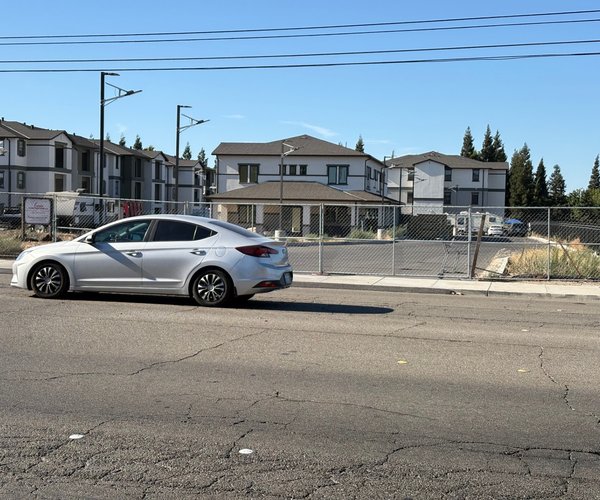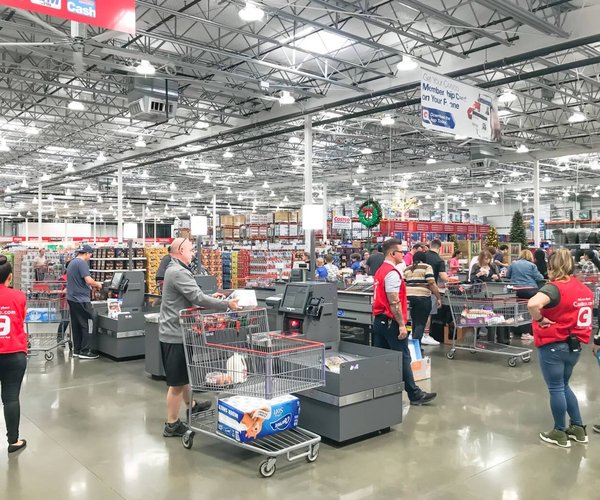It was 2 a.m. Tuesday.
The air temperature was down to 78 degrees.
The pavement definitely was warmer.
A couple dozen yards away, a car drove by on Union Road.
Usually, you could hear the engine.
But in the heat of the night, the sound was drowned by the incessant droning of AC units.
The knee jerk reaction, of course, is climate change is causing all the misery.
Yes and no.
Eight hours earlier, just a short stroll to the north of Union Road, the climate paradox is explained by two different deliberate acts.
Between Louise Avenue and the railroad tracks is the folly of textbook planning.
It was written by the “pros”. The same brotherhood of “pros” that now say we got it all wrong.
In a different era it could have been labeled smart growth.
“It” is a 6-foot high masonry wall flushed against an 8-foot wide sidewalk on the west side of Union Road.
That sidewalk runs into more concrete — curb and gutter.
There is then an uninterrupted expanse of five lanes of asphalt.
That connects to a sound wall/sidewalk combo on the east side of Union Road.
There are a few — and extremely inadequate — wisps of shade.
They come from trees.
Strike that. They are wannabe trees.
They are more ornamental than shade.
It is what happens when you have to prevent roots from bucking sidewalks.
On the surface it’s a street scene.
In reality, it is a very effective passive — and massive — heat storage device that bakes people.
Walk by it at 6 p.m. and it was miserable, just like you’d expect.
Do it again, after sundown.
It’s cooler but it doesn’t feel like it.
Each step you take heat radiates from the sound wall and the sidewalk.
It burns your feet. It helps make sweat bead on your brow.
Down the street is a different story.
Instead of sound walls separating homes from the street, there is a grassy stretch.
In that stretch are real trees.
Trees that grow tall.
Shade reaches almost all the way over the five lanes of Union Road to the opposite curb.
And no sidewalks are buckled.
It’s 6 p.m.
The temperature is 103 degrees.
Yet, walking down the sidewalk it feels a lot cooler.
Trees, planted and nurtured right, can lower the temperature of the air that it shades.
The ground temperature even more so.
After sundown, it is downright pleasant walking on the sidewalk.
Take a look around Manteca.
There are very few similar street scenes except, of course, in sections of old central Manteca.
The reason is simple.
Air conditioning wasn’t something a homeowner could afford before 1950 unless they were Daddy Warbucks.
The AC supposedly made living in the valley more tolerable.
In reality, it allowed people to be stupid, if you will.
No need for big shady trees.
No concern about going wild with concrete.
Soon home designers and government regulators were doing business differently.
Heavy reliance on AC — and central heat as well — made passive designs of homes and landscaping superfluous.
Then issues came up with energy use and keeping the planet green.
Electricity costs rose.
Everyone decided homes had to be sealed tight to reduce power use.
So here we are today.
Homes are now hot boxes relying 100 percent on artificial means to cool while leaving nature — from Delta breezes to landscaping — out of the equation.
Landscaping today is heavy on the ornamental side and woefully short on functionality when it comes to living in the Northern San Joaquin Valley, or much of California for that matter.
We have created urban environments even in small towns and the suburbs that make things hotter.
There is even a fancy term for it — “heat islands.”
Now professional planners are slamming heat islands and the poor planning that went into it as making day-to-day life more miserable and even deadly.
Imagine that.
Adding salt to the wound, what helps elevate temperatures creating heat-related health issues also creates more runoff issues that contributes more to floods.
More impermeable surfaces means more runoff
A two-for, so to speak, to mess up the climate.
Or more precisely, a double-edged sword to exacerbate natural climate change impacts on the human fools — those that wantonly contribute to it and those who think they can contain it.
Follow the science, they say.
Unfortunately, those schooled in political rhetoric that spend millions to obtain positions of power to lead us don’t follow all of the science.
Climatology in a vacuum is one dimensional. But combine it with other disciplines such as archeology, dendrochronology, and geology to name a few, and you get more of a holistic approach.
Mankind’s brief history is littered with failed civilizations at the hands of natural forces whether it is drought, flooding, volcanic eruptions, or trying to defy basic tenets of life such as too much salinity in irrigation water rendering soil sterile and torpedoing food production.
Clearly, climate change isn’t in man’s wheelhouse to create. That doesn’t mean the acts of civilization can’t contribute to its impacts in various degrees.
The key is adapting to it as long as we can.
Pulling the plug on fossil fuels is inevitable given there is a finite supply.
The state mandated climate change policy that Manteca — and other California cities are required to weigh and adopt — is heavily weighed on addressing the evil internal combustion engine.
The same internal combustion engine that brought prosperity and longer lives to the masses through increased mobility and freeing many from perilous life shortening labor.
The climate change handbook being forged is short on micro-climate changes with any teeth that can help ensure neighborhoods and communities can adapt.
One does not have to deep-six energy standards or abandon air conditioning.
All it takes is blending what the purveyors of disruptive technology have done over the past 200 years and wed it with common sense.
Eco-technology is simply getting back to the basics.
A city like Manteca in the scorching Central Valley that has gotten hotter over the years due to things such as the ground being asphalted and cemented over and large functional shade trees being eschewed for stunted ornamental eye candy, needs to implement painless and effective neighborhood solutions to help turn down the heat and reduce the risk of increased flooding.
Mandating development that treats trees as important as how cars are powered in combating climate change is a start.
There are also endless other fixes.
An example are the massive heat radiating and storage devices that every new tract home has — 100 percent concrete driveways.
A throwback to Southern California sensibilities in the 1930s that inspired driveways using pavers — or even concrete poured in a pattern — with space for grass or ground cover is more than a small gesture.
Multiply it by a thousand driveways and the heat and storm runoff reduction adds up.
Add in an honest-to-goodness nearby shade tree properly planted and cared for and the climate advantages accelerate.
Arguably, the most effective place to make lasting inroads in our “climate change battle” is not in a new car dealership showroom but the front yards of new homes.
This column is the opinion of editor, Dennis Wyatt, and does not necessarily represent the opinions of The Bulletin or 209 Multimedia. He can be reached at dwyatt@mantecabulletin.com






